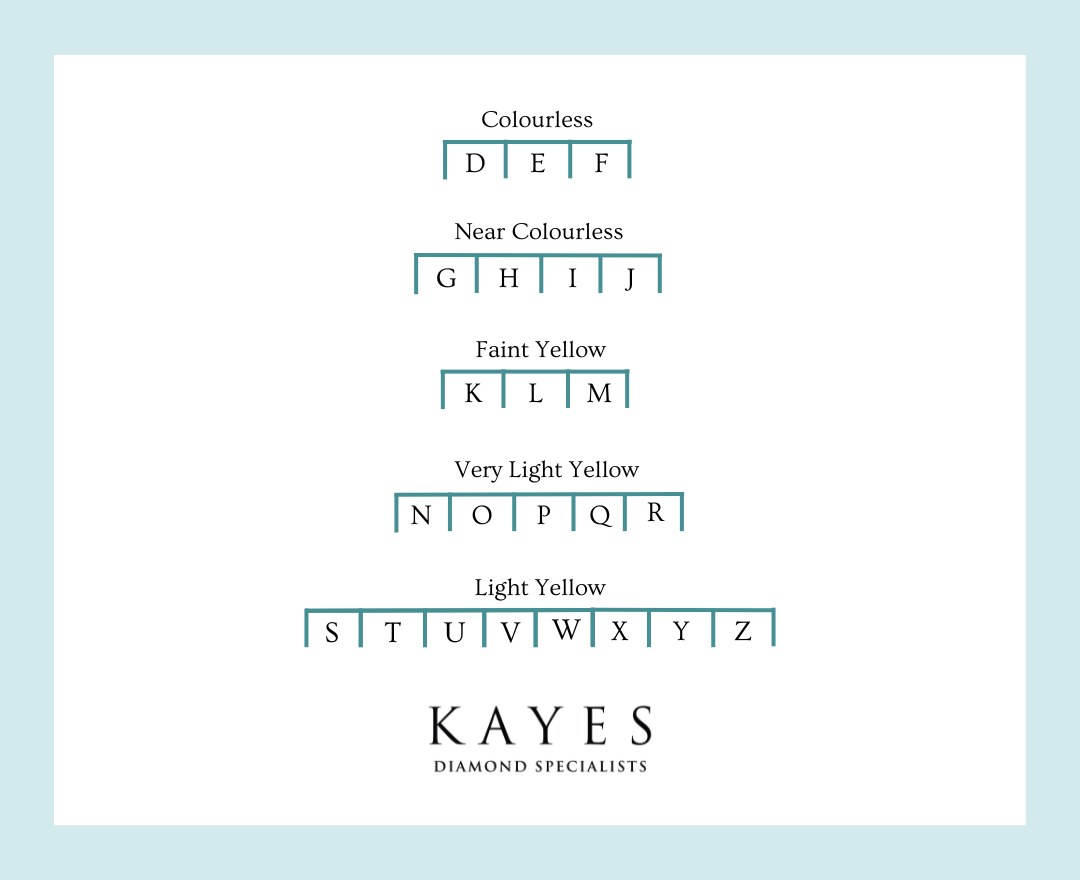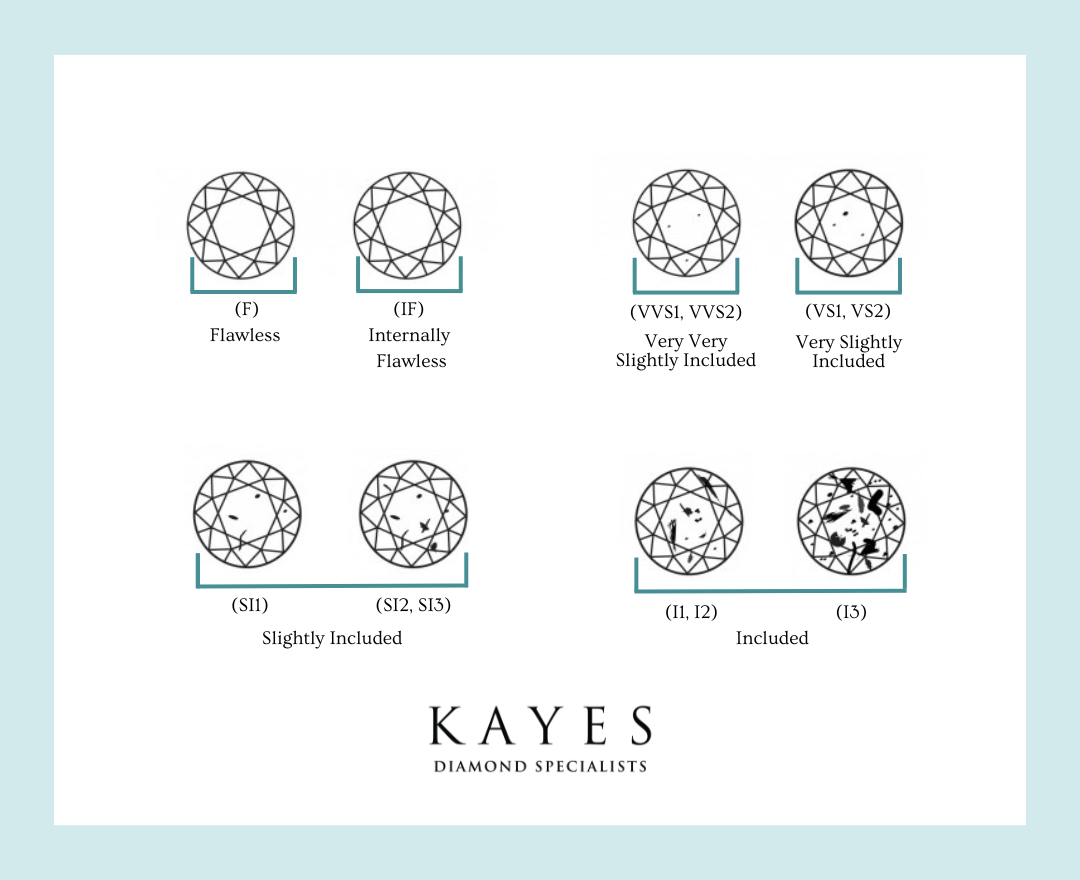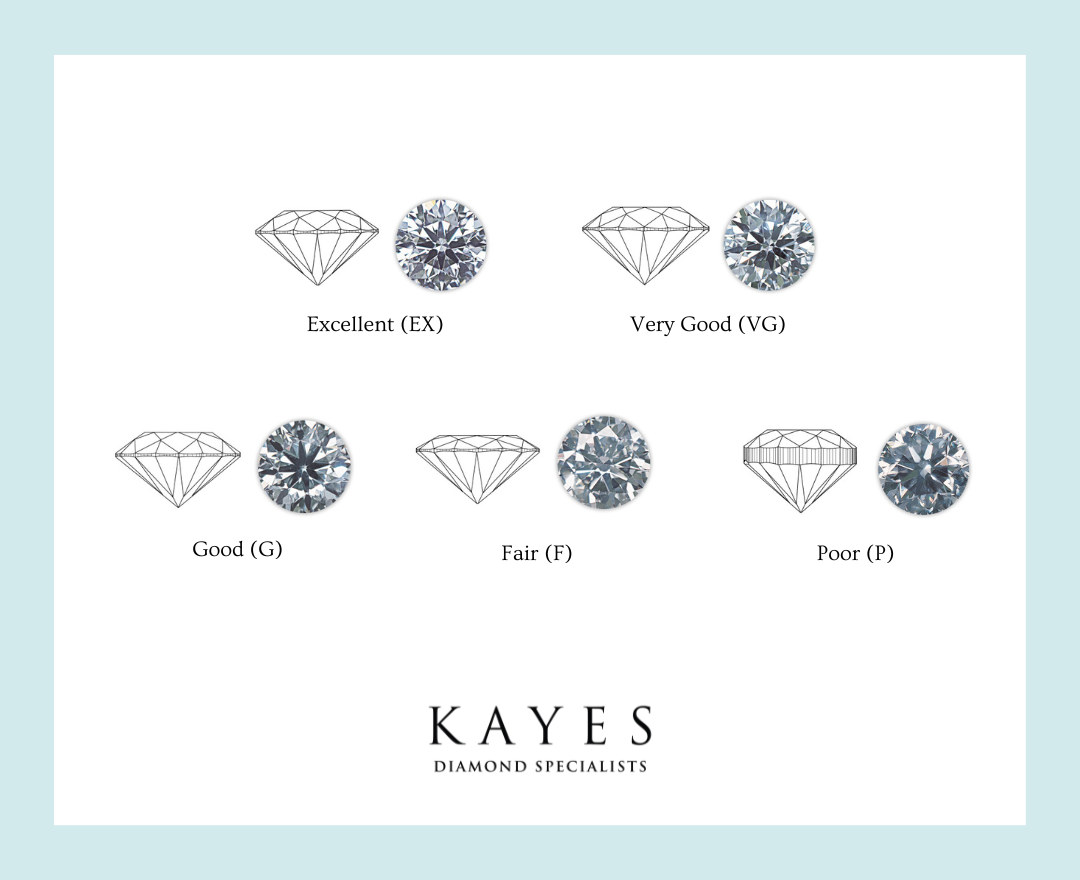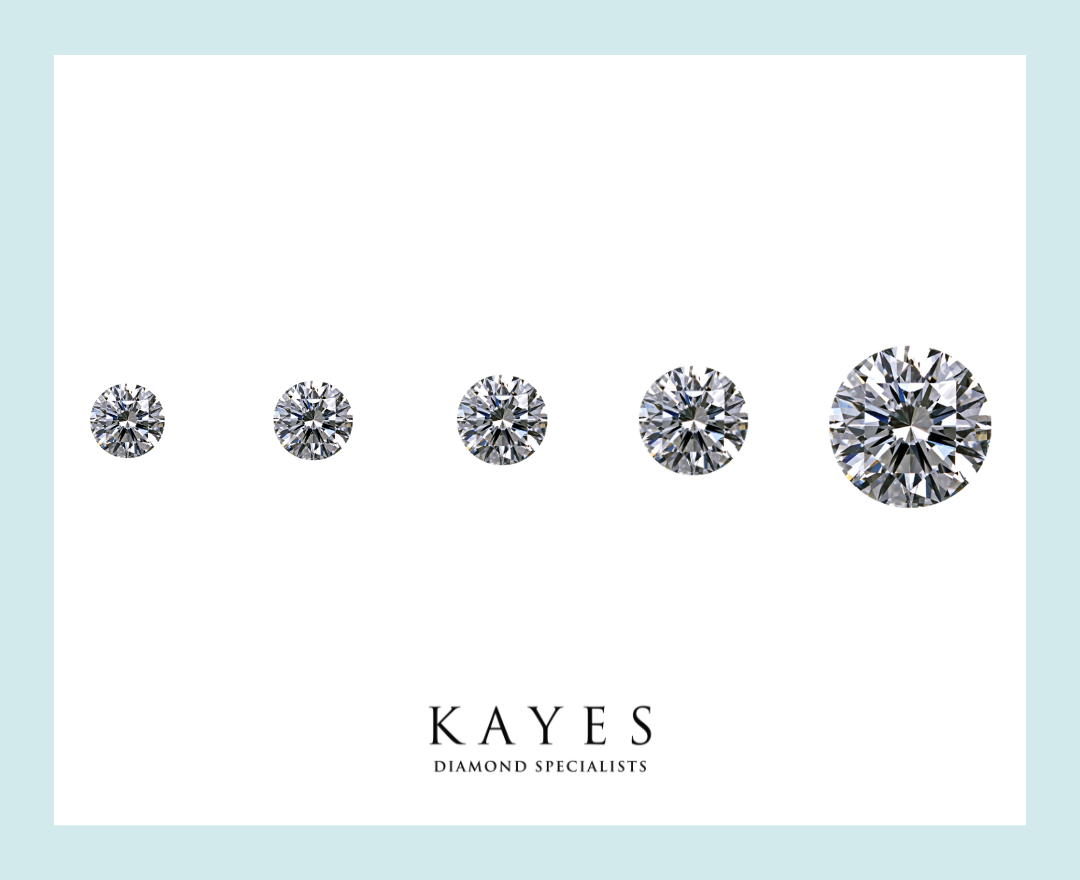Previous
Our Diamonds
When you buy a diamond from Kayes, you buy with co…
The Gemological Institute of America (GIA) created the 4C's grading scale, relating to the colour, clarity, cut and carat weight of a diamond. The combination of these four factors determine a diamonds rarity, value and ultimately the price. In this comprehensive guide, we'll delve into each of the 4C's to help you make an informed and confident choice when selecting the perfect diamond.
As important as the 4C grading system is, the grading reports do not express the true beauty of a diamond, which can only be seen by the eye. A diamond should never be purchased on its grading report alone, as two diamonds with the same grading report can differ greatly. Each diamond is as unique as your love story. Your personal preferences and emotional connection to a diamond play a vital role in your selection. While the 4C's provide valuable information about a diamond's technical attributes, it's your individual taste and the way a diamond captivates your heart that truly matter.
When choosing a diamond, consider the 4C's as a foundation, but let your eyes and emotions guide your final decision. After all, a diamond's true worth is not just in its rarity, value, or price but in the way it sparkles in your heart and reflects the love and memories it represents.
GIA grades a diamonds colour on a scale from 'D' to 'Z'. A diamonds colour actually refers to the lack of colour. From the rarest, colourless D grade, very subtle increases in yellow saturation occur, most people being able to see a softer tint in diamonds at the K colour grade.
D colour is the ‘best’ and of course for an engagement ring sometimes only the best will do. Lower colour grades are not ‘wrong’ they are simply not as rare and therefore cost less. Choosing a less rare colour grade leaves you more money to increase the diamond size or clarity.

Clarity refers to the presence and severity of blemishes, flaws and internal marks found in almost all diamonds. Due to how diamonds are formed, it is incredibly rare to find a diamond completely free of small natural inclusions, however they do exist and are graded as 'Flawless'. As a result they are the most valuable. Diamonds in the 'Included' quality range are less rare and less valuable.
Precise grading can help you to compare prices, but when mounted in a ring a Flawless diamond and a slightly included one can look very similar. Most inclusions are only visible using a 10x lens, so selecting a slightly included diamond will give you a saving you can put into improved colour or increased diamond size.
Clarity is ranked on the below scale:
- Flawless (FL) - No inclusions or blemishes are visible under 10x magnification.
- Internally Flawless (IF) - No inclusions and only blemishes are visible under 10x magnification.
- Very, Very Slightly Included (VVS1 & VVS2) - Inclusions are difficult to see under 10x magnification.
- Very Slightly Included (SI1 & SI2) - Inclusions are noticeable under 10x magnification.
- Included (I1, I2 & I3) - Inclusions are obvious under 10x magnification.

Regardless of colour and clarity, the irresistible fiery brilliance of a diamond is only unlocked by skilled cutting of the diamond rough.
Using a car as an analogy, the cut is the power, the engine performance, a better cut diamond giving superior brilliance and light performance. This can have a dramatic effect on the price of diamonds that are otherwise identical.
The GIA cut scale applies to the most popular of cuts, the round brilliant cut. There are five cut grades: Excellent, Very good, Good, Fair and Poor.

The metric weight of a diamond, the term originating in Ancient Egypt where the very uniform sized carob seeds were used as a measure of weight. One carat is divided in to 100 points, for example a 50 point diamond weighs 0.50ct. Two diamonds with the same weight can vary greatly in price depending on the colour, clarity and cut grades.
A diamond's value increases exponentially with its weight, diamonds being traded in dollars per carat on the world markets. Be aware that the visual size of identical weight diamonds can vary, because a three dimensional diamond can be cut shallow (appears larger) or deeper (appears smaller). Ignore this fact and you could pay for a 0.50 carat weight diamond that has the diameter of a much smaller stone.

Diamonds are small items of extremely high value. Small differences in a diamonds internal features can make a huge difference to the asking price of a diamond.
Similarly, near identical diamonds can have wildly different prices and the reason isn't immediately clear through a shop window. Buying a certificated diamond helps to some degree, but there are some certificates that are wholly inaccurate and diamonds with identical paperwork can appear quite different when seen.
We invite you to visit us and learn about diamonds yourself, first hand, by handling the diamonds you may be interested in buying. Once you have seen and understood, you will have the confidence to make the right decision about your diamond purchase. To help you understand this further Kayes offer free diamond consultations. You will be able to learn and see with your own eyes what it is that sets individual diamonds apart.